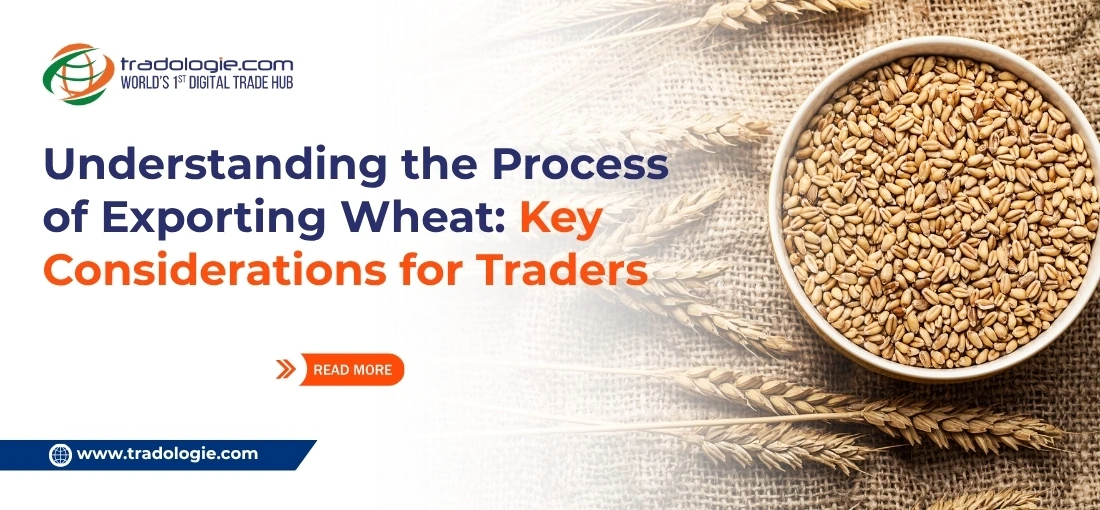How to Export Barley in Bulk: Documentation, Ports & Buyer Profiles
Key Highlights:
- Barley exports are increasing worldwide because more people need it for food, animal feed, and brewing industries.
- The main export markets are Saudi Arabia, UAE, countries in Europe, and Southeast Asia.
- Important documents for exporting include an Import Export Code (IEC), FSSAI certificate for shipments from India, and a phytosanitary certificate to show the grain is pest-free.
- Big ports in top exporting countries handle large barley shipments quickly and efficiently.
- To export barley successfully, you need to focus on quality, complete the right paperwork, and manage costs carefully.
Introduction
Exporting barley requires careful focus on quality, proper paperwork, and keeping costs under control. Globally, its export business has quietly grown into a strong and steady part of the grain trade. Around the world, demand is rising for malted Barley , animal feed, and the brewing industry and leading exporters, such as Russia, France, Ukraine, and Australia
When it comes to India, it is primarily an importer rather than a major exporter, with annual shipments around 200,000-300,000 metric tons. Nevertheless, Indian barley still finds buyers in Saudi Arabia, UAE, Nepal, and Vietnam.
This blog guides exporters on how to export barley in bulk from major producing countries. We cover the required documents, key ports, and the typical buyer profiles to help you manage exports confidently and efficiently.
Understanding Global Barley Export
Top barley-exporting countries include Russia, France, Ukraine, Australia, and Canada. These nations export barley to meet demand for livestock feed, malt, and industrial uses.
Export Varieties
- Six-row feed barley: Widely used for livestock feed
- Two-row malting barley: Preferred for beer production due to enzyme activity and uniform grain size.
Platforms like Tradologie help exporters from any country connect directly with verified bulk buyers worldwide, offering transparent pricing and end-to-end trade support.
Essential Documentation for Barley Export
Exporting barley requires compliance with both domestic and destination-country regulations. Following are the typical documents that are needed:
Exporter Registration: Get an Import Export Code (IEC) or similar registration in your country.
Commercial Invoice & Packing List: List the barley's type, grade, net weight, and total quantity.
Certificate of Origin: Shows where the barley comes from, issued by the local Chamber of Commerce.
Phytosanitary Certificate: Confirms the grain is free from pests and meets health standards.
Quality & Inspection Certificate: Issued by agencies like SGS, Bureau Veritas, or Intertek to prove quality.
Bill of Lading / Airway Bill: Given by the shipping company after loading the shipment.
Customs Declaration & Shipping Bill: Needed for clearance through local customs.
Insurance Certificate: Recommended to protect against any shipment risks.
Major Ports Handling Barley Exports
Exporting countries rely on major bulk ports to facilitate barley trade:
| Port Name | Country | Primary Use |
|---|---|---|
| Odessa | Ukraine | Major barley shipments to Europe and Middle East |
| Marseille | France | Exports malt and feed barley to global markets |
| Vancouver | Canada | Bulk shipments to Asia and Americas |
| Kwinana | Australia | Leading port for Australian barley shipments, especially to Asia |
| Kandla | India | Bulk exports to Middle East and Africa (for Indian shipments) |
Buyer Profiles: Who Imports Barley in Bulk?
Mostly, feed mills, breweries, and maltsters import barley from India. Let's look at each type and why they buy barley in large amounts.
- Maltsters and Breweries: Big beverage manufacturers and malt houses source malting-grade barley for beer and whiskey. Countries like Japan, Belgium, and Vietnam are regular buyers.
- Feed Millers and Livestock Farms: Buyers in Saudi Arabia, UAE, and Jordan use barley for animal feed, usually in large volumes.
- Grain Traders and Import Distributors: Traders buy mixed-quality barley in bulk for resale in local markets.
- Government Procurement Agencies: Some governments import barley for food aid or stock reserves, requiring strict quality and inspection compliance.
Pricing Factors and Market Trends
Barley prices depend mainly on the following factors that can affect the market trends:
- Domestic harvest in exporting countries: For example, a cold spring in Russia can lower crop yields, reducing supply and raising export prices.
- Global demand for malt products: For example, more beer production in Germany and the UK increases need for malting barley, affecting prices worldwide. in Saudi Arabia, UAE, and Jordan use barley for animal feed, usually in large volumes.
- Freight and container availability: For example, fewer shipping containers from Australia to Southeast Asia during busy seasons can make costs higher for buyers.
- Currency changes: For example, if the Russian Ruble drops against the USD, barley from Russia becomes cheaper for international buyers, making it more competitive.
As of early 2025, export prices from the main barley-exporting countries are between USD 210-250 per metric ton, depending on type, quality, and destination. Indian barley, while mostly imported, is still available in smaller amounts for special markets.
Challenges & Risk Checklist for Exporters
- Moisture Sensitivity: Maintain moisture below 12% to prevent fungal growth. Proper storage and fumigation are essential.
- Quality Rejections: Broken kernels or inconsistent grain size can result in rejected shipments
- Documentation Delays: Missing or inaccurate certificates can hold up customs clearance.
- Freight Fluctuations: Global freight cost increases can affect overall margins.
- Payment Assurance: Use secure platforms like Tradologie to ensure verified buyer connections and protected payment processes.
As of early 2025, export prices from the main barley-exporting countries are between USD 210-250 per metric ton, depending on type, quality, and destination. Indian barley, while mostly imported, is still available in smaller amounts for special markets.
How Tradologie Simplifies Barley Export
Tradologie's digital platform helps exporters reduce dependency on middlemen and ensures direct visibility with global buyers.
- Verified Buyer Access: Connect with importers in over 50 countries.
- Transparent Bidding: Real-time price negotiation ensures competitive rates.
- Integrated Documentation: Supports shipment tracking, customs filing, and digital invoices.
- Secure Payments: Trade under full escrow-backed systems for safety and trust.
Conclusion
Exporting barley in bulk from the top producing countries is becoming a bigger and better opportunity in the global market. Paying close attention to proper documents, quality standards, port operations, and competitive pricing helps make trade smooth and reliable. In India, barley is mostly imported, but some barley from India does reach buyers in other countries.
Digital platforms like Tradologie make exporting easier and safer by connecting verified Indian exporters with real bulk buyers across the world, reducing risks and ensuring smoother trade




